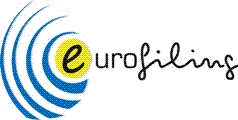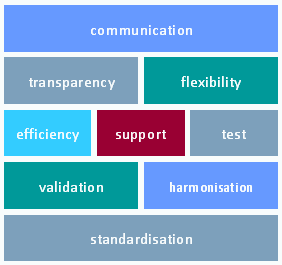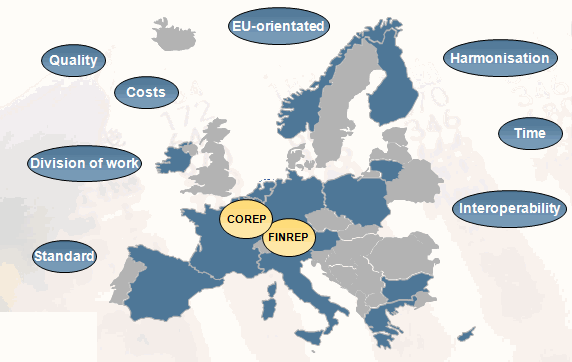CEBS Why is XBRL recommended to be used?
From XBRLWiki
| Revision as of 18:18, 14 April 2010 (edit) Katrin (Talk | contribs) (→support) ← Previous diff |
Revision as of 18:18, 14 April 2010 (edit) Katrin (Talk | contribs) (→harmonisation) Next diff → |
||
| Line 90: | Line 90: | ||
| <li>Approach is in line with the reconciliation for an harmonised reporting in the EU</li> | <li>Approach is in line with the reconciliation for an harmonised reporting in the EU</li> | ||
| <li>Uniform validation rules can be used</li> | <li>Uniform validation rules can be used</li> | ||
| - | <li>Allows cooperation on a unified data basis �(i.e. Colleagues of Supervisors)</li> | + | <li>Allows cooperation on a unified data basis (i.e. Colleagues of Supervisors)</li> |
| </ul> | </ul> | ||
Revision as of 18:18, 14 April 2010

Contribution dated 2009-12-23
ALL TOPICS ARE STILL ON DISCUSSION!
(To be completed)
Contents |
Introduction
This document intends to clearify why the CEBS (Committee of European Banking Supervisors) recommends the use of XBRL since 2005.
Historical background
In the end of 2004 the CEBS COREP Operational Network provided a set of very complex but harmonised European tables summarising the implementation of Basel II pillar I for Europe to a group of IT experts from different European national banks to create a common electronic format.
Their requirement: the common European electronic data format should represent the defined Excel tables. The set of Excel tables defined reportable financial business data, validation rules, specific views on the data and labels defined first in English but later in several European languages.
We discussed three different alternatives XML, SDMX and XBRL. The last one was in 2004 an upcoming standard but at this time not yet widely used. Because SDMX and XBRL already provided a frame for the report of financial data and both were standardised, SDMX by ISO and XBRL by industry, a proprietary and in-house developed XML format was no longer considered.
The usage of a standard allows to access best results of science and technique and reduces the efforts for the creation of own propably poorer solutions. With each new member adopting a standard the spreading of this technology increases and eases the interoperability. A standardisation increases the efficiency and minimises the market risks.
SDMX provided a good possiblity to cover the multidimensionality of the COREP tables whereas XBRL supported multi lanuages, a possibility to define the presentation and it also included support for validations but it missed a support for multi dimensions.
In February 2005 a group of around fifty volunteers including serveral XBRL experts met to discuss how XBRL could be extended to support this missing functionality. A solution was found and the standard was extended accordingly and finalised right before the publication of the first COREP XBRL taxonomy. This new functionality made XBRL quite more attractive and now 5 years later the adoption of XBRL increased significantly worldwide http://www.xbrlplanet.org.
Benefits of XBRL
communication
- Single, XML-derived reporting standard
- Detailed understanding of data model
- Interoperability with existing XML schemas
- Several languages can be incorporated
transparency
- Comparability of data across Europe
- Possibility of a faster exchange of information with regard to the financial crisis
- Versioning will be supported
- Open source
flexibility
- XBRL is extensible --> adaptation to national discretions
- Modularised architecture of XBRL
- Structural changes in the data are not reflected in the instance
efficiency
- Reduction of cost and time along the supply chain for financial information
- Eases the possibility of automation by supporting
- automated error detection
- versioning
- Time and cost saving for the reporting entity because of early responses
- One common format is more cost-effective than a numerous number of different proprietary formats
support
- Shifting of manual support to automated processes
- In-house developed systems can be replaced by standardised market solutions
test
- XBRL reports can be easily tested before submission
- Transition process of a reporting entity could be supported by providing a test platform
validation
- Validation via standardised approaches
- Extensive possibilities for formula definitions
- Summarisation of formulas --> reduction of the amount of formulas
- No need for specific in-house solutions for the reporting entities
harmonisation
- Approach is in line with the reconciliation for an harmonised reporting in the EU
- Uniform validation rules can be used
- Allows cooperation on a unified data basis (i.e. Colleagues of Supervisors)
standardisation
- Assures competitive capacity
- Eases the exchange with other European countries
- Enables the use of standardised technology
- Eases interoperability
- Minimises risks
- No other standardised business reporting standard exists



